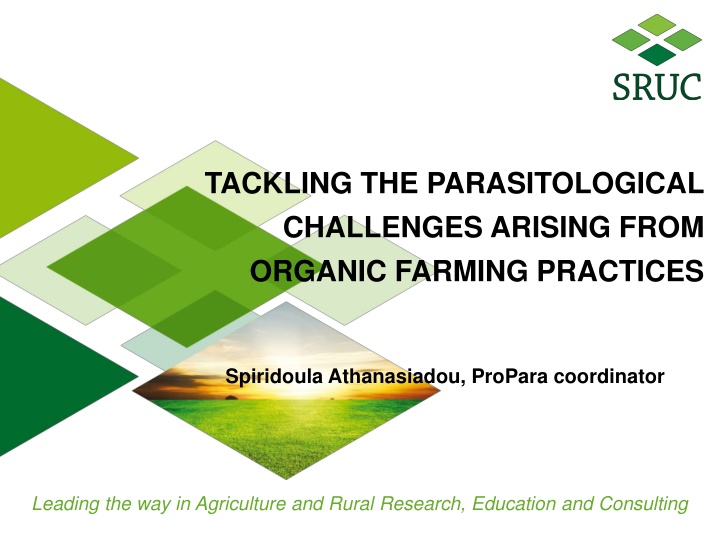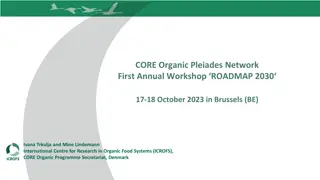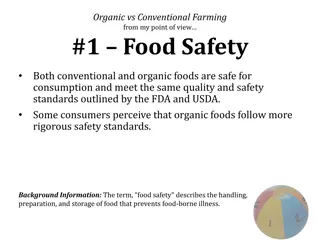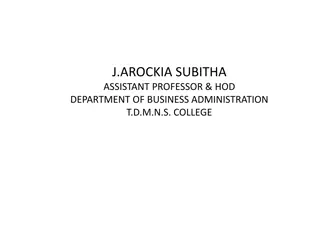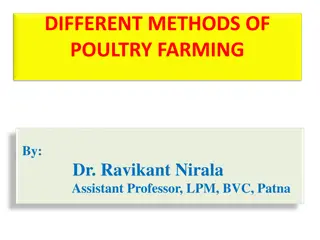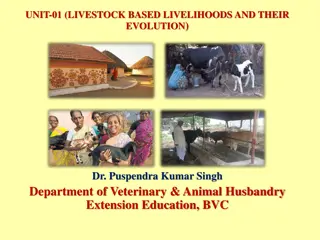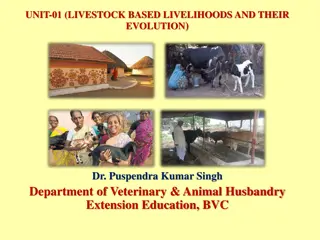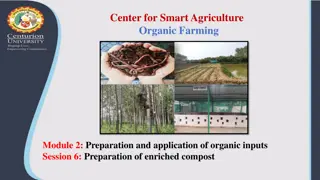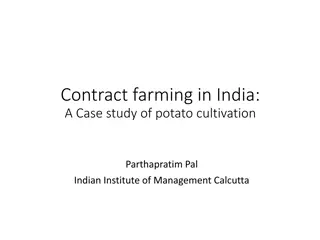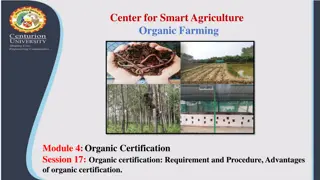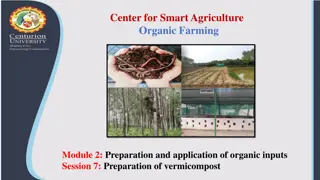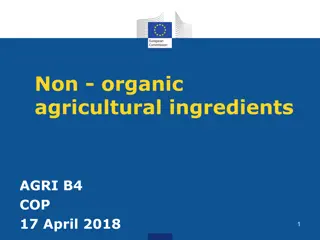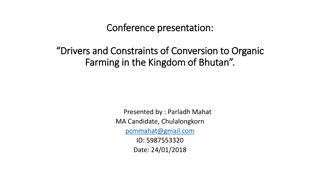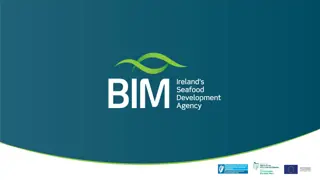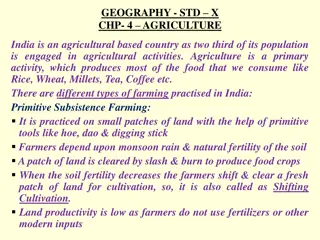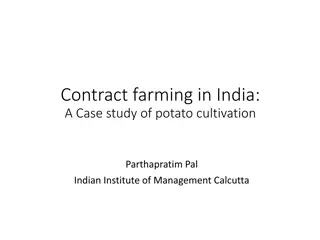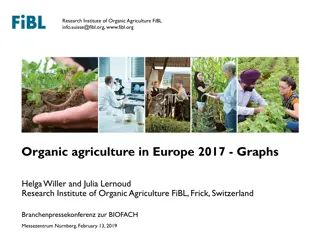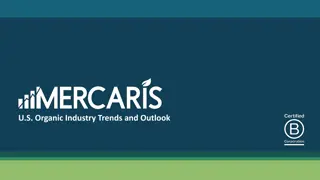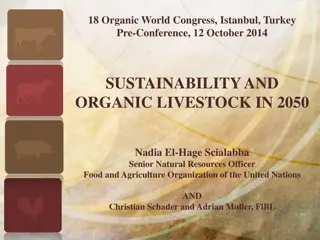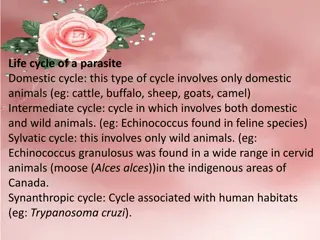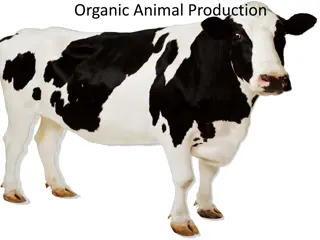Innovations in Parasite Control for Organic Farming
ProPara is dedicated to optimizing parasite control strategies for organic farms through targeted research and innovative tools. By generating data, evaluating implementation strategies, and collaborating with key stakeholders, ProPara aims to enhance animal health and welfare in organic farming practices. The project focuses on delivering valuable insights and practical solutions to address parasitological challenges in organic agriculture.
Download Presentation

Please find below an Image/Link to download the presentation.
The content on the website is provided AS IS for your information and personal use only. It may not be sold, licensed, or shared on other websites without obtaining consent from the author.If you encounter any issues during the download, it is possible that the publisher has removed the file from their server.
You are allowed to download the files provided on this website for personal or commercial use, subject to the condition that they are used lawfully. All files are the property of their respective owners.
The content on the website is provided AS IS for your information and personal use only. It may not be sold, licensed, or shared on other websites without obtaining consent from the author.
E N D
Presentation Transcript
TACKLING THE PARASITOLOGICAL CHALLENGES ARISING FROM ORGANIC FARMING PRACTICES Spiridoula Athanasiadou, ProPara coordinator Leading the way in Agriculture and Rural Research, Education and Consulting
ProPara aim Generate information and novel tools that can be readily used by organic farmers to improve animal health and welfare Achieve this by targeting the interface between research and dissemination We will utilise industry datasets (e.g. liver condemnation data) and close links with key stakeholders for our on-farm trials (through the extension services of the partners)
ProPara approach Perform targeted research at a farm systems level, to fine-tune sustainable parasite control strategies, and/or facilitate the implementation plans Pool information generated from the current and legacy national and international research projects and perform cost-benefit and farmers acceptance analysis Evaluate implementation strategies and disseminate them to key stakeholders of the wider organic community
ProPara deliverables Report on helminth parasite control strategies across organic farms in Europe Generate quantitative data on the use of alternatives for GIN control in organic sheep and goats Economic impacts of the implementation of alternative approaches for GIN control Characterisation of dairy cattle breeds on their resilience/robustness to GIN infections Estimates of liver and rumen fluke incidence in organic cattle and sheep farms Electronic application ( app ) that identifies potential risk of infection with liver fluke Web-based decision tree evaluated by the organic farming community for its applicability, for the control of GIN in cattle, sheep and goats
UK contribution Perform on farm trials where alternative strategies of GIN control are put to test by organic farmers
Basket of options trial Organic sheep farmers are given options to consider for sustainable worm control Suggested strategies to reduce worm burdens: - Drench if FEC are rising - Protein supplementation (DUP) around parturition and/or lactation - Grazing on bioactive forages, e.g. chicory - TSTs. Weigh lambs a few times a year and calculate grass availability. If weight is less than expected (based on grass availability measured) animals get drenched The participating farmer can select one or more of these options, use it in one group, and then compare the results with another group managed in a usual manner.
Farmer 1: FEC vs weight gain Currently - Ewes: mob FEC and blanket drenching although he leaves 10% undrenched - Lambs: drenching based on mob FEC if suspected problems Farmer monitors lamb weights at 2-3 occasions. - 1st 42-84 day old, - 2nd 21 weeks old - Likely a third weighing sometime between the two above He also measures DM of grass.
Weight gain 01. 07 19. 07 1. 00 0. 80 0. 60 kg/ day 0. 40 0. 20 0. 00 1 2 3 4 5 6 7 8 9 10 11 12 13 14 15 16 17 18 19 20
FEC 01. 07 19. 07 350 280 210 eggs/ g 140 70 0 1 2 3 4 5 6 7 8 9 10 11 12 13 14 15 16 17 18 19 20
Preliminary conclusion Drenching on weight gain did not target the animals with high FEC Small scale experiment? Still waiting on final numbers
Farmer 2: Protein supplementation Current parasite control strategies: clean grazing, drenching following mob FEC Pre Lambing (22/2/15) he feeds a home made mix consisting of: Organic HiPro Soya 50g/Lamb (oil 2.10%, Fibre 3.60%, Protein 47.5%, Ash 6.50%) Organic Molasses 8g/lamb Organic Oats 50g/lamb Minerals 10g/lamb Ad lib Grass and Hi mag mineral buckets. 2weeks before official lambing date ( 23/3/15) and 6 weeks of Lambing as above but in addition ad lib Silage Post Lambing n=10 ewes were supplemented with 100g organic soya per lamb (treated group). Control group stayed unsupplemented (n=10)
Faceal Egg Counts Un- suppl em ent ed Soya- suppl em ent ed 700 560 FEC ( eggs/ g) 420 280 140 0 07. 05. 15 14. 06. 15
Preliminary conclusion Soya supplementation has reduced FEC in ewes Small scale experiment, but encouraging Still waiting on final lamb weights to investigate whether there was an effect on lamb performance
Farmer 3: Low Input. Source of protein Soya vs Sopralin Soya and sopralin both high in protein, but sopralin higher in DUP Aim was to test the effect of protein source on FEC and weight gain of ewes Supplementation about 100g/day per lamb N=10
Faceal Egg Counts Soya Sopr al i n 40 32 FEC ( eggs/ g) 24 16 8 0 09/ 12/ 2015 21/ 02/ 2016
Ewe Weight Soya Sopr al i n 110 88 Wei ght ( kg) 66 44 22 0 09/ 12/ 2015 21/ 02/ 2016
Preliminary conclusion A diet rich in DUP does not seem to infer any additional benefits to FEC and performance of ewes Small scale experiment
Acknowledgements Financial support provided by transnational funding bodies, being partners of the FP7 ERA-net project, CORE Organic Plus, and the cofund from the European Commission. http://coreorganicplus.org/research- projects/propara/
